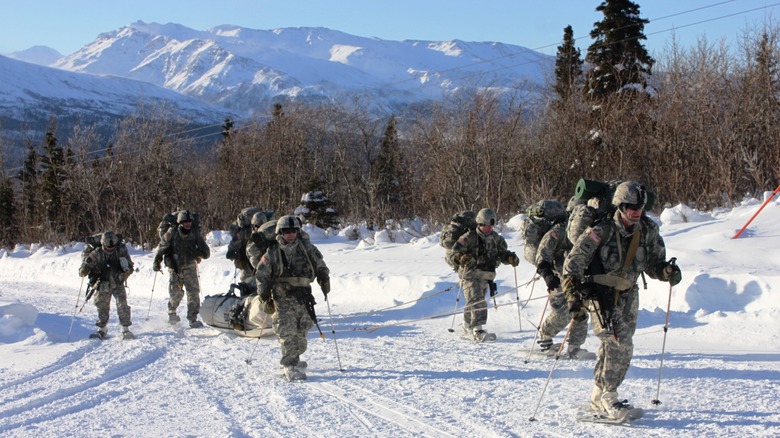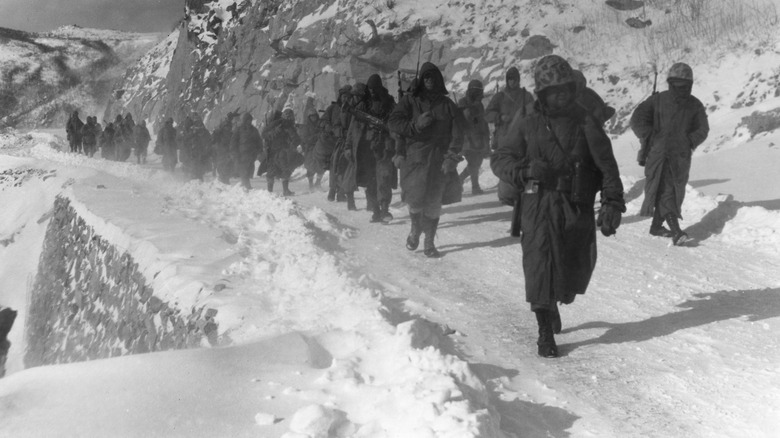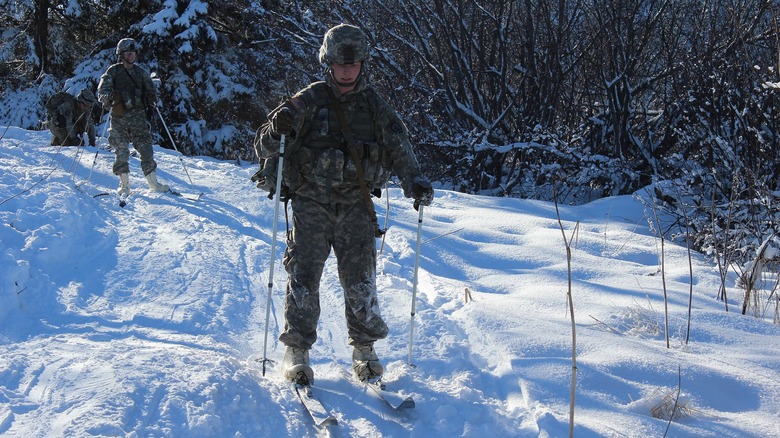How Does The US Army Equip And Train Soldiers For Arctic Conditions?
Whether it was the Teutonic Knights on frozen Lake Peipus in 1242 A.D., the French fighting the Russians during a blizzard at Eylau in 1807, or the Western Front freezing during the winter of 1916 and 1917 in WWI, many armies have fought in near-Arctic conditions without the right training or equipment. As a result, these military operations usually fail miserably. Determined to prepare its troops against the perils of cold weather the best it could, the U.S. Army created the Alaskan Testing Expedition, which performed cold weather training and equipment testing at Mount McKinley National Park in June 1941.
The training and testing continued over the years, and after the Russo-Finnish winter war, the U.S. Army decided to invest specifically in training soldiers in winter and mountainous conditions. To accomplish this, the 10th Light Division (Alpine) was created on July 15, 1943, and it would be re-designated as the 10th Mountain Division the next year. The 10th put its training to the test in January 1945 by seizing key German positions on Riva Ridge and Mount Belvedere. Five months of intense fighting in Italy saw the 10th Mountain Division destroy five German divisions, proving the value of this training and equipment. But that was just the beginning of arctic weather training for the U.S. Army.
Freezing conditions in the Korean War led to revamped cold weather training
Members of the Army and Marines who had not specifically been trained in this division, however, were unprepared for the cold weather fighting at the Battle of the Chosin Reservoir during the Korean War.
The doctrine of the day was based on the "layer principle" which was simply to add as many layers of clothing as possible to stay warm. Flannel shirts, sweaters, vests, ear-flapped winter hats and the eponymous M1943 field jacket constituted the "cold weather" gear of the day, which proved relatively ineffective during the battle. In total, 8,000 troops suffered frostbite at Chosin. As retired U.S. Marine Corps Gen. Raymond Davis recalled to Health.mil, "The snow came. The temperature dropped to 40 below zero ... faces covered with ice, food frozen, water frozen."
Ironically enough, the U.S. Army had established the Army Arctic School in November 1948 with the primary task of training students in operations under arctic conditions. The facility trained students on key skills such as arctic survival and skiing while also preparing them to resolve problems of a tactical nature in cold environments. The school would undergo several name changes over the years before settling on the U.S. Army Northern Warfare Training Center in April 1963.
How does the U.S. Army train its soldiers for cold weather today?
The race for the resources of the Artic heated up exponentially after the Cold War. This prompted a renewed focus on the Army's preparedness to train and equip its soldiers to fight and win in the Arctic and Arctic-like conditions, using new technology that transformed the military.
New state-of-the-art cold weather gear was rolled out in 2023, including technology that could keep your hands warm without gloves. Another major gear upgrade was the Cold Temperature and Artic Protection Systems (CTAPS), which allows soldiers to withstand extremely cold temperatures. The CTAPS consists of five components including a base layer, a lightweight insulated layer, a softshell uniform, a cold-weather uniform, and an extreme cold weather parka and trouser set.
This gear comes together with intensive training such as at the Cold-Weather Operations Course (CWOC) in Fort McCoy, Wisconsin. This intensive 14-day course trains students to survive and battle in cold weather conditions through classes in snowshoes, skiing, ahkio sleds, weather analysis, winter camouflage, concealment, and winter fighting. This training center and others such as at the Northern Warfare Training Center in Alaska, seek to create so-called Arctic Experts. Steven Decker, an instructor at the center, defined an Arctic Expert to the U.S. Army's news site as, someone who makes "their equipment function as expected" and doesn't let the environment stop them "from finishing the mission."


